For all large capital cities in ancient and modern history, protection was one of the major survival strategies. And what historical capital was bigger than legendary Constantinople? Known as Istanbul today, Constantinople has one of the richest city histories in the world and has long been a cradle of Western civilization. As an imperial capital for almost sixteen centuries, Constantinople was the epicenter of many major events. But how do you go about protecting such a vital and large capital? A cunning enemy can find a variety of ways to invade and threaten a city – no matter how well fortified it is. For Constantinople though, the secret lay in its position. Situated on a strategic peninsula, it was always vulnerable from a naval attack . But there’s a solution to every problem and this article examines Constantinople’s great chain “barrier” across the Golden Horn waterway, which was instrumental in defending the city’s main naval access point. Constantinople’s great chain prevented attack and invasion for centuries until the city finally fell in 1453 AD.
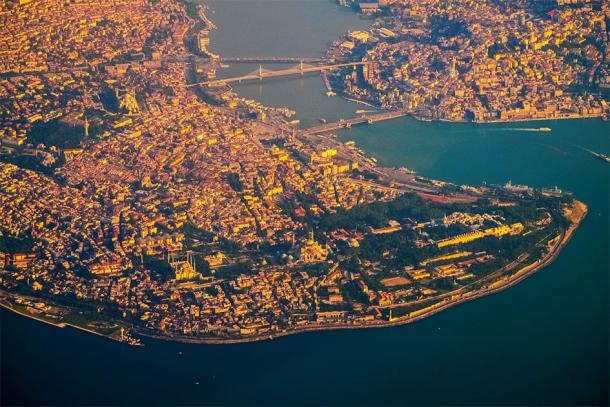
The Golden Horn as it looks today in the city now known as Istanbul. This rich trade waterway is still highly strategic for the area and well protected, even without Constantinople’s great chain barrier. (Dudarev Mikhail / Adobe Stock )
Constantinople’s Golden Horn: Advantages And Disadvantages
Naval warfare and naval military technology have long been fields of innovation and strategic advancement. In the classical world, powerful navies were often the key advantage for major powers and empires. Having a powerful naval force meant a city or empire could undertake naval sieges and blockades as well as wage long range warfare. But in the case of Constantinople, a naval attack from a powerful enemy could quickly spell doom. This was largely because of the Golden Horn’s vulnerabilities and it’s position close to the city.
The Golden Horn, known to the ancient Greeks as Chrysókeras (Χρυσόκερας) is an estuary of two major rivers and an inlet in the larger Bosphorus strait. It is around 7.5 kilometers (4.66 miles) long, and 750 meters (2,460 ft) wide at its widest point. The maximum depth, at the point where it flows into the Bosphorus, is roughly 35 meters (115 ft). The Golden Horn estuary is the defining feature of the peninsula on which Constantinople is situated, creating a sheltered, horn shaped harbor which helped the city remain well protected in most situations.
The Golden Horn had a rich and vibrant history, even before the emergence of Byzantium and later Constantinople. Archaeological research tells us that the Golden Horn was a busy waterway as early as 6700 BC, with numerous ancient settlements discovered around it. However, its primary importance developed dramatically around the 7 th century BC, when the waterway’s ancient ports really came into the forefront.
In 2008, during the construction of the Marmaray tunnel and the Yenikapı subway station, archaeologists discovered a Neolithic settlement and burial site which pushed the history of the city back to 6500 BC. But in latter millennia, beginning around the 7 th century BC, the Golden Horn truly became a vital waterway that was crucial for trade in the ancient world. Some researchers suggest that the estuary gets its epithet “ Golden” from the fact that it brought great wealth to the city due to its highly strategic position.
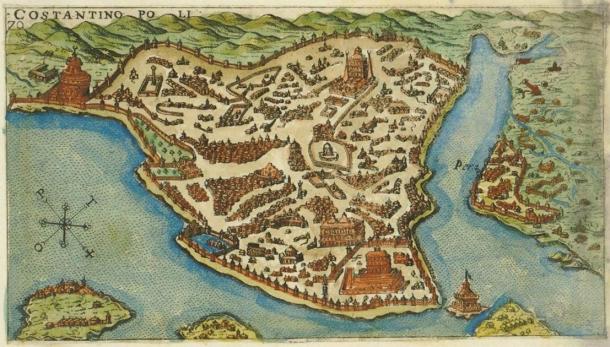
Map of the island of Constantinople (mod. Istanbul), created in 1597 by the Venetian Giacomo (Jacomo) Franco (1550-1620). ( CC BY-SA 3.0 )
Constantinople’s Great Chain: Powerful Linked Iron Barrier
But as history often mandates, Constantinople’s waterway was not used exclusively for trade. It was also the city’s weakest position. When enemies abound, such an inlet becomes a big opportunity for a cunning attackers. For Constantinople, the Golden Horn waterway could bring doom at any given time. If unopposed, a hostile fleet could enter the waters and bypass the protective horn-shaped harbor, effectively striking the city’s vulnerable rear position. To prevent this, the Byzantines made use of a trusted naval defense method, a large chain. Also known as a boom, this chain can be strung and tightened at a crucial moment, preventing entrance of ships into an inlet. Constantinople’s great chain was placed at the exact entrance to the Golden Horn waterway. It extended from the Tower of Eugenius on the city’s outer walls to the so-called Megálos Pýrgos , the Great Tower, on the other side of the waterway.
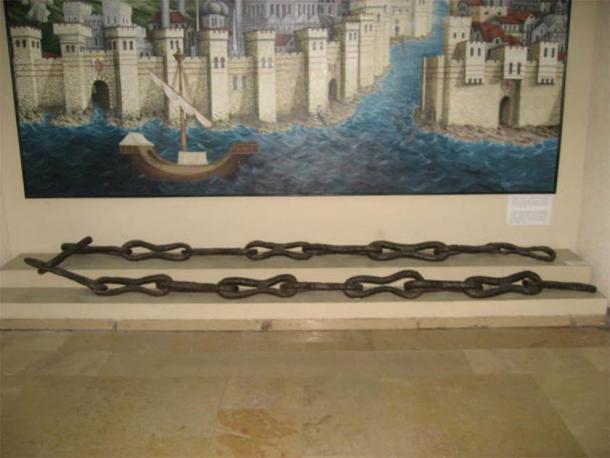
Part of Constantinople’s great chain still in existence. (Gryffindor / CC BY-SA 4.0 )
In the era it was built, the construction of such a large and powerful chain was surely a daunting task and a major architectural and engineering achievement. Constantinople’s great chain was made from hundreds of heavy forged iron links. When fully extended, it measured 750 meters (0.46 miles) in length.
There is a lot of debate about the actual weight and dimensions of each link. The preserved portion of the great chain has links that weigh between 12 and 15 kilograms (26-33 pounds). Each link is 50 centimeters (20 inches) long and 5 centimeters (2 inches) thick. Some scholars claim that this “old” chain dates to a later Byzantine period, and that in earlier periods it could have been much heavier.
Historical sources emphasize the great weight and dimension of the chain. The late Byzantine chronicler and historian George Sphrantzes, a witness of the Fall of Constantinople, wrote:
“…the chain was extremely heavy… the emperor ordered that this very heavy chain of iron be placed at the mouth of the harbor” .
Other sources suggest each individual link could have been as long as one meter (3.2 feet). The general consensus holds that some links actually weighed more than half a ton (1102 pounds) each, but this has not been proven.
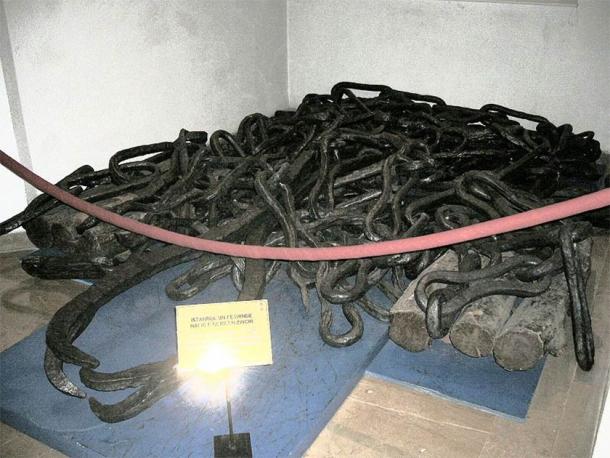
Part of the chain which the Byzantines stretched across the mouth of the Golden Horn to keep out the navy of Mehmed II in 1453 during the siege of Constantinople. On display in the Istanbul Military Museum (Turkish Askeri Müze ). ( CC BY-SA 4.0 )
When it was not deployed for defense – which was very often – the chain in its dormant state had 9 catenary curves. A catenary is the natural curve that a chain assumes under its own weight. These sags were the result of 10 support points: two were the tower endpoints, and the other eight were on large pyramidal pontoons which stretched across the Golden Horn waterway. These enormous pontoons were made from tree trunks, fastened together by iron plates. Together, with the chain, they made for an impenetrable barrier. The square base of one of these pontoons measured 20 by 15 meters (65 x 49 ft). In the two towers, the chain was operated by a complex and ingenious system of wheels, pulleys, and water tower counterweights.
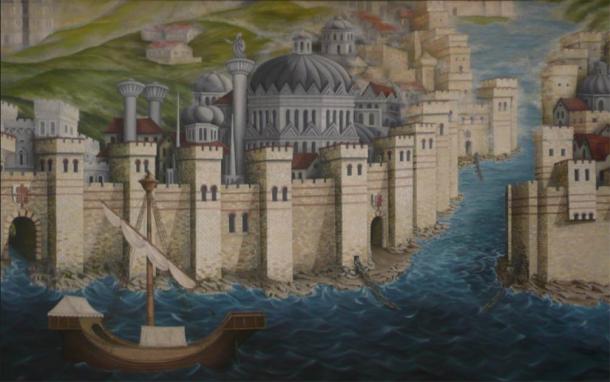
A mural in the Istanbul Archaeology Museums depicting the seaward walls of the Byzantine capital, the Golden Horn with its chains and the Genoese Colony. ( CC BY-SA 3.0 )
The Arabs Try To Break Through Constantinople’s Great Chain
Many centuries before the Fall of Constantinople, the great chain proved to be one of the most important defensive strategic advantages in the Mediterranean. It was between 717 and 718 AD, when the Muslim Arabs of the notorious Umayyad Caliphate launched a devastating and decisive attack against Constantinople. Their powerful and numerically superior fleet was a huge advantage. The Byzantines – led by the Emperor Leo III the Isaurian – were facing a highly probable defeat. But great are the minds of great leaders like Leo III. He came up with a cunning plan with which to defeat the invading fleet, and Constantinople’s great chain played a crucial role in that plan.
Around September 3 rd 717 AD, the Arab fleet commenced their attack, and entered the Golden Horn inlet unopposed because there was no chain to block their path. This was all part of Leo III’s brilliant strategy. As the Arab fleet entered deeper into the waterway and into the view of the defenders, the wind and the currents gradually brought the ships closer to the city walls. In this crucial moment, Leo ordered the great chain to be raised, and immediately the defenders of Constantinople began a devastating attack with highly flammable Greek Fire. Greek Fire is a combustible compound emitted by a flame-throwing weapon. Some historians believe it could be ignited on contact with water. It was probably based on a mixture of naphtha and quicklime.
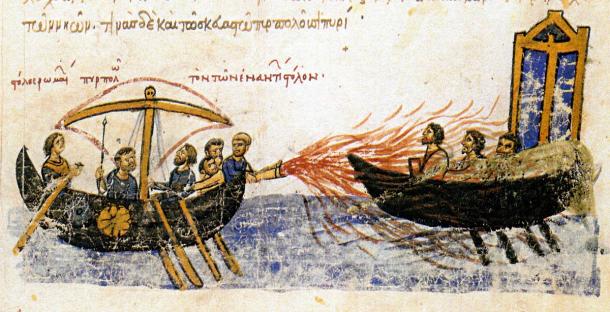
The Byzantines successfully used Greek Fire against the Arab fleet in the attacks of 717-718 AD. ( Public domain )
Surprised and unable to escape, the Arabs stood no chance. Their sailors burned alive and littered the water surface of the Golden Horn, as their burning ships sank. Those vessels that avoided the devastation of the flames attempted to retreat back the way they came. But the great chain of the Golden Horn stood tight and unbreakable, barring the way, and leaving the ships to face certain death in the fiery waters.
Fans of modern fantasy literature will surely see the similarity between this historic event and the highly popular “ A Song of Ice and Fire” novels, precursors to the acclaimed TV show “Game of Thrones.” And indeed, you’d be right to draw such a parallel. The writer of the novels, Mr. George R. R. Martin, did draw inspiration from this iconic historic defense of Constantinople. It served as a basis for his fictional “Battle of the Blackwater Bay,” in which the attacking King Stannis Baratheon sends his entire fleet into the narrow inlet of the Blackwater Bay. Once in sight of the walls of the city he is attacking, the fleet is utterly destroyed by “ wildfire,” a novel flammable weapon. Coincidentally, the flaming fleet cannot flee: the way back is barred by a huge iron chain made from enormous links – a invention devised by the cunning dwarf Tyrion Lannister. History and fantasy were combined into one exciting and exhilarating fictional battle that remains a favorite of readers across the world.
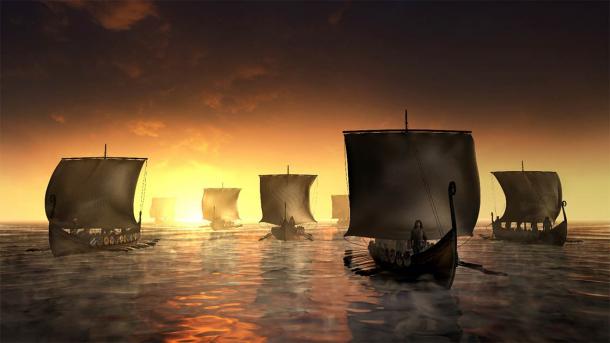
The Rus’s Vikings attacked the Byzantine capital in the 940s AD but were consumed by Greek Fire like the Arabs before them. (Vlastimil Šesták / Adobe Stock )
Getting Past Constantinople’s Great Chain Was Possible
For the enemies of the Byzantine Empire, the Constantinople’s great chain posed a big obstacle, and many attackers had to come up with alternative strategies to get around the chain. There are several notable situations in which the great chain of the Golden Horn was successful and a few where it didn’t work. One of the earliest events in which the great chain is mentioned is coincidentally the time when it was of no use.
Sometime during the 940’s AD, the Rus’ prince, Igor of Kyiv , launched a major attack against Constantinople. For this feat, he relied heavily on his powerful fleet, which the Viking-influenced Rus’ were well known for. But interestingly, Igor didn’t lead his fleet across the sea and into the path of the chain. Instead, he had his fleet portaged across land. Portaging was a practice in constant use by the Rus’: they would roll their warships on huge logs across land, often bypassing dangerous routes or using the strategy as a tactical advantage. In the attack on Constantinople, portaging was a major advantage for Igor. By travelling across land and immersing his ships at the far end of the Golden Horn, he managed to bypass the notorious great chain without even coming close to it.
Nevertheless, Igor of Kyiv didn’t manage to overcome Constantinople. Believe it or not, Igor’s numerically superior fleet was utterly destroyed by a small, rundown flotilla that was purposely set on fire. In the narrows of the Golden Horn, the powerful fleet of Rus’ warships was consumed by fire ships, just as the Arab attackers before them. Igor of Kyiv never fully recovered from this devastating defeat.
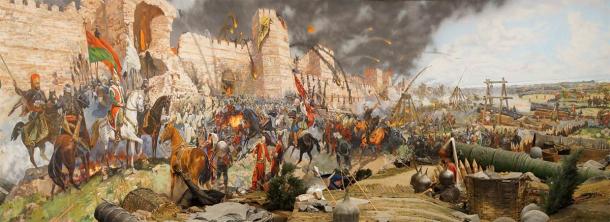
The Fall of Constantinople in 1453 was the end of the Constantinople’s great chain barrier. (cascoly2 / Adobe Stock )
During the Fall of Constantinople in 1453 AD, the great chain was extremely effective. In that fated year, the powerful Ottoman fleet, under the command of Sultan Mehmed II , attacked the city in full force. But their war galleys were halted by Constantinople’s great chain. Using brute force, the galleys could not break it apart and enter deeper into the inlet. All the while, their ships were pelted from three sides by defender missiles. When the Sultan saw that his attack had been stopped by the chain, he chose the route of other attackers and portaged around the chain. Between the 21 st and 22 nd April 1453, a smaller fleet of 70 Ottoman galleys was portaged across land and put back in the water on the other side of the chain. They were cut off from the greater part of their fleet, which remained behind the chain that could not be broken. But the Ottomans, in the end, were successful and the Constantinople fell on 29 May 1453 AD.
From Chains To Shackles: Constantinople, The City Of Cities Falls
Constantinople was a jewel of Western Civilization and one of the largest cities of the ancient world for a long, long time. Defending it against hordes of greedy enemies was certainly no easy task. Commanders and engineers had to come up with new and ingenious ways to defend their capital. Constantinople’s great chain across the Golden Horn was one such innovation and it proved to be the key defensive barrier to the great city for many centuries. Alas, when facing invasion from all sides by a superior force, a big, unbreakable chain isn’t enough.
Top image: Underwater chains. Credit: kelevra85 / Adobe Stock
Related posts:
Views: 0
 RSS Feed
RSS Feed

















 September 27th, 2020
September 27th, 2020  Awake Goy
Awake Goy 

 Posted in
Posted in  Tags:
Tags: 
















